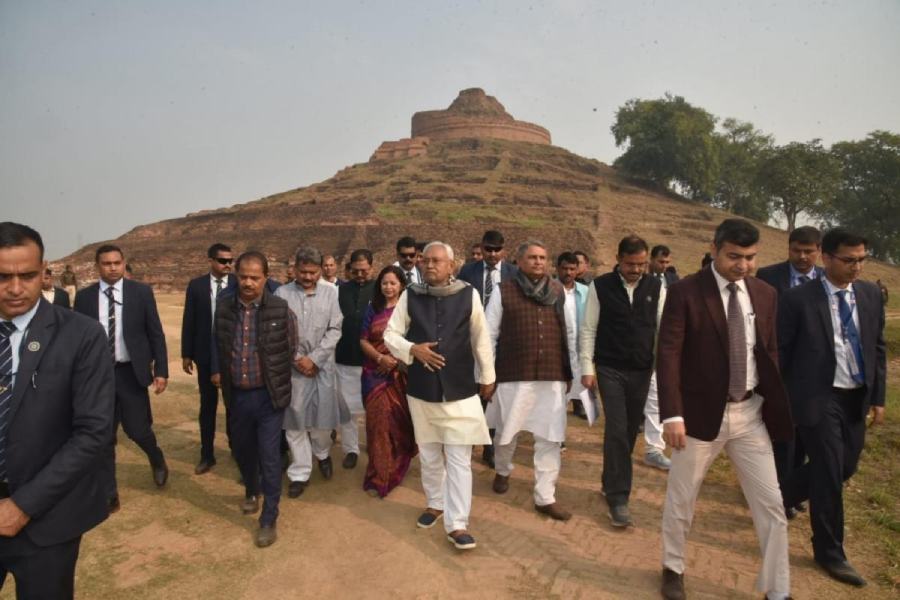Bihar chief minister Nitish Kumar on Tuesday took an initiative to put the Kesariya Stupa — the tallest excavated stupa in the world — prominently in the global tourism circuit.
He inaugurated various facilities for visitors on Tuesday and laid the foundation stone for the construction of a unique set of replicas of iconic tourist spots of the state.
The Mauryan era stupa, located at Kesariya in East Champaran district, around 110km north of the state capital Patna, marks the place where Gautam Buddha, while travelling to Kushinagar (now in Uttar Pradesh) after announcing his impending death at his last sermon delivered at Vaishali, forbade the people (of Vaishali) to accompany him, gifted his begging bowl and persuaded them to return.
The inaugurated facilities include a tourist centre, an eight-room guesthouse for visitors and a restaurant built at a cost of around Rs 7 crore. The Rs 20 crore project includes the construction of a replica of the Kesariya Stupa, which will also show the portion that has collapsed.
Eight smaller replicas of famous tourism spots — the Mahabodhi Temple, ancient Nalanda and Vikramshila universities, Ashokan Pillar of Vaishali, Vikramshila University, Barabar Caves, Sujata Stupa, Gurpa Hills Buddhist site, and the Vishva Shanti Stupa — will surround it to provide a peep into the history, art and culture of Bihar. A small state-of-the-art conference hall and an exhibition gallery will also be a part of it.
Nitish took a tour of the Kesariya Stupa along with ministers and officials and asked them to develop the place in such a manner that the tourists enjoy a hassle-free visit. He also directed them to properly illuminate the site with high-mast lights so that it could be visible from a distance and could be accessed in the evenings as well.
“There is a need to provide a better approach road from the main road to the stupa. A pathway around the stupa structure should also be constructed for the easy movement of visitors,” Nitish told the officials.
Colonel Colin Mackenzie, who went on to become the first surveyor-general of India, is said to have explored the Kesariya Stupa in 1814. The Archaeological Survey of India’s (ASI) first director-general Alexander Cunningham conducted a small-scale excavation near the site in 1861. However, the ASI could conduct a large-scale excavation only in 1998.
The 31.31-metre-high stupa is of a circular base with a diameter of 123 metres. Made of burnt bricks, it has six terraces or layers having several cells for housing images of the Buddha. The structure is topped with a huge cylindrical drum.
A senior ASI official, talking to The Telegraph on the condition of anonymity, said the stupa and the place around it is a treasure trove of ancient structures and antiquities. He expressed worry over unchecked development and construction in the area.
“The Kesariya Stupa and its surroundings are yet to be fully explored and excavated. Any digging there yields antiquities. There might be several structural remains underneath the ground, but we are witnessing unchecked construction work everywhere. It will ruin everything if the government does not stop it,” the ASI official said.










